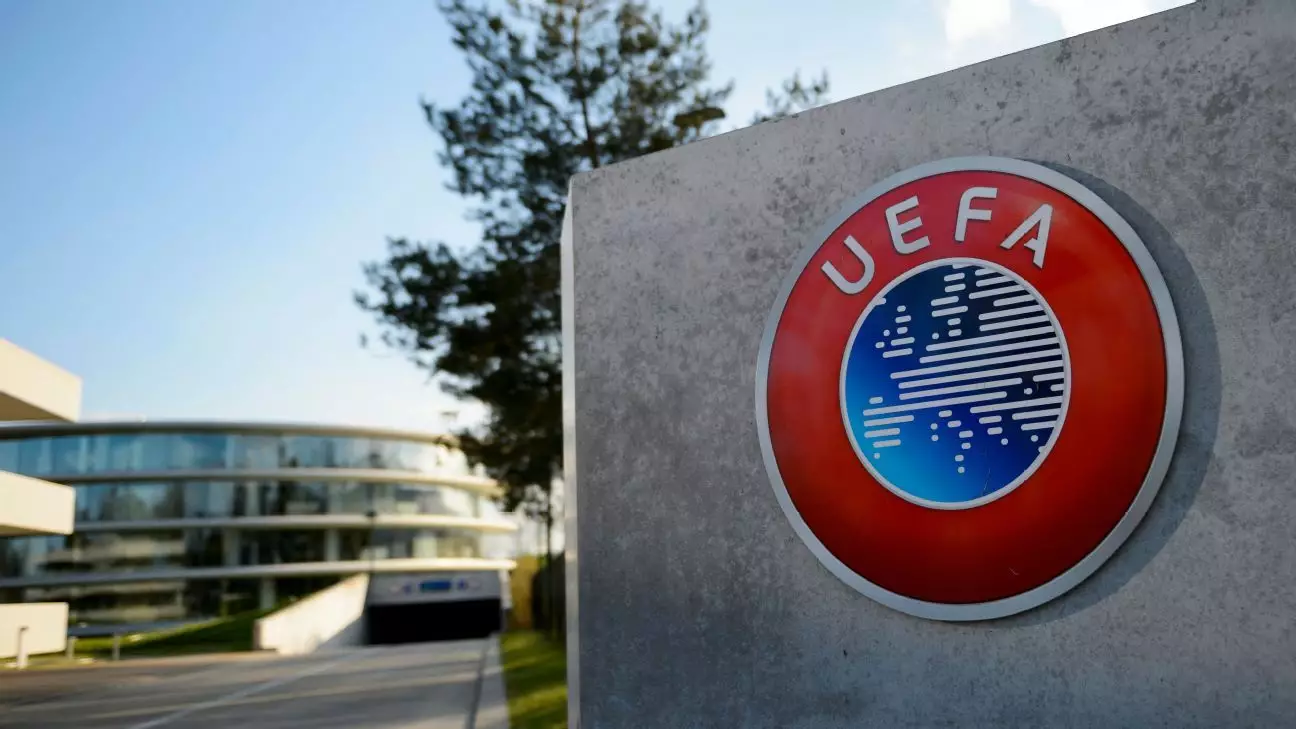In a landscape where the competitive structure of European football is undergoing relentless scrutiny, A22 Sports has re-emerged, seeking to disrupt the status quo once again with its proposed tournament, the “Unify League.” Their bold initiative to establish an alternative to well-entrenched UEFA competitions comes on the heels of a significant ruling from the European Court of Justice (ECJ) last year, which positioned UEFA under the microscope regarding its monopolistic practices. As the sports world watches closely, many questions loom large—chiefly, can A22 deliver a product that appeals to clubs, fans, and sponsors alike, and can it surpass the economic allure that UEFA has cultivated over decades?
The genesis of the Unify League is rooted in the contentious debates surrounding competitive fairness and the economic monopolies held by organizations like UEFA. Following the ECJ’s decision—which acknowledged that UEFA’s regulations restricted rival competitions—A22 has positioned its tournament as a new frontier for clubs eager to explore alternatives to traditional European tournaments. The critical stipulations set forth by the ECJ dictate that any new competition must ensure inclusivity and meritocracy while adhering to the FIFA match calendar. A22 maintains that while they strive to meet these criteria, UEFA continues to draft regulations that reinforce its dominance, thereby limiting the viability of the Unify League.
The unfolding confrontation between A22 and UEFA is not merely a legal squabble; it embodies the larger tensions within football concerning historical prestige, financial incentives, and fan engagement. While A22 insists that their approach is more open and democratic, the existing structure of European football has deeply ingrained loyalties towards UEFA’s established tournaments. This creates a paradox where clubs, despite desiring competition, remain tethered to a system that has provided them financial security.
Unify League’s Economic Viability: A Complex Puzzle
Central to the Unify League’s appeal is its promise of a revolutionary business model designed to secure revenue through a unique streaming service called the Unify Platform. This model envisions games streamed for free, supplemented by advertising, with an option for fans who prefer an ad-free experience to purchase a premium subscription. However, the underlying question remains: can the Unify Platform actually outperform the monetization strategies already in play with UEFA?
The challenge for A22 is monumental. UEFA’s Champions League stands as a titan of football revenue, raking in substantial sums from broadcasting deals, sponsorship, and merchandise. A22 must not only match this income but also offer clubs more enticing financial prospects. The apparent naïveté in A22’s proposal raises eyebrows—if free streaming with commercials can generate higher revenue, one must ponder why existing broadcasters have not capitalized on this approach.
Moreover, the ambition of A22 to create a sustainable revenue-generating platform amid the competitive pressures of established leagues takes on a more complicated hue. Their optimistic financial forecasts stand in stark contrast to a reality where sports fans exhibit loyalty to familiar brands. Changing entrenched viewing habits could prove an uphill battle.
Structural Composition and Tomorrow’s Excitement
From a structural standpoint, the Unify League plans to host four divisions, most notably the Star League and Gold League, each comprising 16 participating clubs. The tournament schedule promises a swath of fixtures, boasting more games than UEFA’s current model. This hub of activity is intended to entice fans with continuous engagement throughout the season. However, this also raises legitimate concerns regarding the potential dilution of significance in matchups. Groups with predictable outcomes or low-stakes contests could lead to apathy among supporters, who crave the thrill of meaningful encounters, especially in a landscape already replete with redundant fixtures.
This insight reveals a critical flaw in A22’s model—while their numbers may theoretically indicate a more robust competition, the practical reality may lead fans to devalue repetitive encounters involving similar teams, diminishing interest over time.
With UEFA securing billions in revenue, the financial weight now squarely rests on A22’s shoulders. For the Unify League to materialize as a genuine competitor, it must not only attract clubs but also secure a substantial economic backing to guarantee a profitable venture. The implied necessity for a “downside guarantee,” ensuring clubs receive more than they would under UEFA’s aegis, remains a pivotal condition for success. This requirement adds layers of complexity to an already precarious negotiation landscape.
The looming question remains—who will back A22? For the Unify League to thrive, it might require a benefactor willing to inject vast sums to balance the equation. If A22 fails to find financial support, the potential for a fragmented football market becomes more likely, where the best clubs find themselves stretched thin between competing leagues.
As the stage is set for this newest chapter in European football, the intersection of law, financial stability, and competitive integrity will shape the future direction of the sport. Both A22’s Unify League and UEFA’s established framework face daunting challenges, and the path ahead remains littered with uncertainty and speculation. Yet, one certainty emerges: in this evolving narrative, the most significant voices belong to the clubs and fans, both of whom will ultimately dictate the future of competitive football in Europe.

